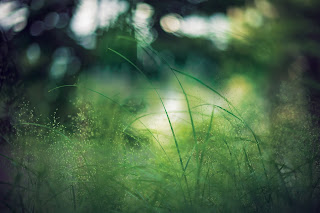Summer Garden Blur, and Marine Environment-Friendly, Biodegradable Sunscreens
Today is August 15, and the food gardens are getting
blurry. The lovely early-season symmetry of straight lines and neat rows is
giving way to chaos. Plants have spread to their maximum girth and are invading
each other’s space. Tomato, pepper, cucumber, and melon plants are sagging to
the ground under the weight of their own production. Weeds that were once scarce
and easy to pull have squeezed in and sprouted from nooks and crannies in the
confusion. It’s a primeval forest of green, dotted with red and pink (tomatoes)
and yellow (Alma peppers). In short, it’s a jungle out there.
This grates on my methodized eye, which longs for Zen
simplicity. This is the time of year when I must accept impermanence, release
the need for control in the garden, and find beauty in the chaos. Or at least
make peace with it.
My husband is great. Last night, he knew without my saying
that I couldn’t bear to go out and bushwhack through the gardens to pick
veggies. So, he quietly grabbed our gathering basket, went to the gardens, and
filled it up. I found the basket of German Pink and Beefsteak tomatoes, green
beans, cucumbers, green peppers, jalapenos, and cherry tomatoes on the kitchen
counter just before bed. I love him so.
Maybe it’s not the disorder that upsets me about the mid-August
gardens: it’s that they’re telling the time. The gardens are always the first
to let me know that blessed summer is drawing down. The truth of impermanence
is never harder for me than when I see summer unwinding.
In New England, winter is long, cold, and stubborn. The
first snow is always enchanting, as is the first day of cross-country skiing. The
first hot cacao is yummy, and winter hats are awesome. But after the first
flush, it gets old fast. I start dreaming hard of summer sometime in early
December. And that’s a long way away from June.
Still, this garden chaos is indicative of tremendous bounty,
for which I’m grateful. We must go through this final and intense growth in
order to harvest everything the gardens have to offer. Like a birth, they’re
pushing out and releasing their primal energy, so that life may continue. There’s
great beauty and magic in that.
Those German Pinks and Beefsteaks my husband gathered last
night are the first ripe large tomatoes from our food gardens this summer.
We’ve had cherry tomatoes for weeks, but our big heirlooms have been slow to
ripen on the vines. It was thrilling to find them last night. This morning, I
peeked at the tomato plants, and sure enough, the big tomatoes are starting to
ripen.
Our Thai Pink Egg Tomatoes are also ripening, and there are
a lot of them. I think I’ll make an interesting sauce with them. My to-do list
today includes finding recipes for Thai Pink Egg tomatoes. Maybe a spicy Massaman
curry sauce.
On another note pertaining to summer: as a girl who’s
definitely a member of the ‘better safe than sorry’ tribe, I want to withdraw the
well-meaning support I’ve given to one of my longtime favorite sunscreens.
I’ve used Coola organic sunscreens for years, but have
discovered that the brand contains non-biodegradable nanoparticles called
oxybenzones that are damaging marine environments and killing coral reefs worldwide.
I was shocked to discover it. I thought only budget brands like noxious
Hawaiian Tropic and nasty Coppertone were guilty of this.
Polytechnic University of Marche in Italy concluded a study
that reported that approximately 14,000 TONS of oxybenzone-laden sunscreen
washes off swimmers worldwide each year. Oxybenzones have contributed to the
worst coral reef die-off in the Earth’s history. Forty percent of the Great
Barrier Reef has disappeared since the 1980s. Eight-five percent of coral reefs
have died in the Caribbean. Ands of today, 99 percent of Florida’s coral reefs
have died from human impact.
The Great Barrier Reef is dying at a shocking rate, and
coral reefs everywhere, which were once homes to a variety of sea life, are
disappearing. For better and deeper information on how sunscreens are wreaking
havoc on oceans, check out The Redford Center’s short film, ‘Reefs at Risk’.
Coola is still organic and better for humans and animals
than drug story variety, UV-chemical-laced, mega-brands like Hawaiian Tropic,
Coppertone, Banana Boat, and the rest. Avoid those under any circumstances. The
sunscreen brands Stream2Sea and Goddess Garden are mineral-based,
biodegradable, oxybenzone-free, and truly non-hazardous to coral reefs and humans
and animals.
I started using Stream2Sea very recently, and love it. It’s
harder to find (you have to order it online) and more expensive than mainstream
sunscreens, and you must rub it in thoroughly (no problem with that – it’s great
lymph massage!), but it works beautifully and harms none. That’s what it’s all
about.
Much love,
Barbie xo


